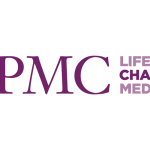 We asked Dr. John W. Mellors, chief of the Division of Infectious Diseases at the University of Pittsburgh School of Medicine, what he believes were the most important news developments in his field in 2016.
We asked Dr. John W. Mellors, chief of the Division of Infectious Diseases at the University of Pittsburgh School of Medicine, what he believes were the most important news developments in his field in 2016.
Here are his top three infectious disease newsmakers:
Zika virus
While the association of maternal Zika infection with fetal microcephaly was suggested in 2015, the data from the South American outbreak and prior French Polynesian outbreak have been sufficient only in this past year to show Zika as a cause of microcephaly. In addition to reports of sexual transmission, there was a case of non-sexual transmission, likely via tears or sweat, in a patient who died with high levels of Zika in the blood. Local transmission of Zika via mosquito bite has now occurred in the US in both in Florida and Texas.
Tenofovir alafenamide
Tenofovir alafenamide, a new formulation of tenofovir (a nucleoside inhibitor of HIV reverse transcriptase and part of many HIV treatment regimens), has been integrated into the first line-treatment guidelines for HIV patients. Multiple trials were published that demonstrated similar efficacy with the older formulation (tenofovir disoproxil fumarate), which improved rates of renal and bone toxicity. Given the need for lifelong therapy in HIV patients, this new agent may improve long-term health in these patients.
Hospital-acquired and ventilator-associated pneumonia guidelines
New guidelines for Hospital-Acquired Pneumonia (HAP) and Ventilator-Associated Pneumonia (VAP) were published by the Infectious Diseases Society of America and the American Thoracic Society. An important update was the exclusion of Healthcare-Associated Pneumonia (HCAP), which has been previously been included. This change may help prevent unnecessarily broad antibiotic use in many patients. In addition, an emphasis was placed on considering local resistance patterns in choosing the most appropriate initial antibiotics in these conditions.








